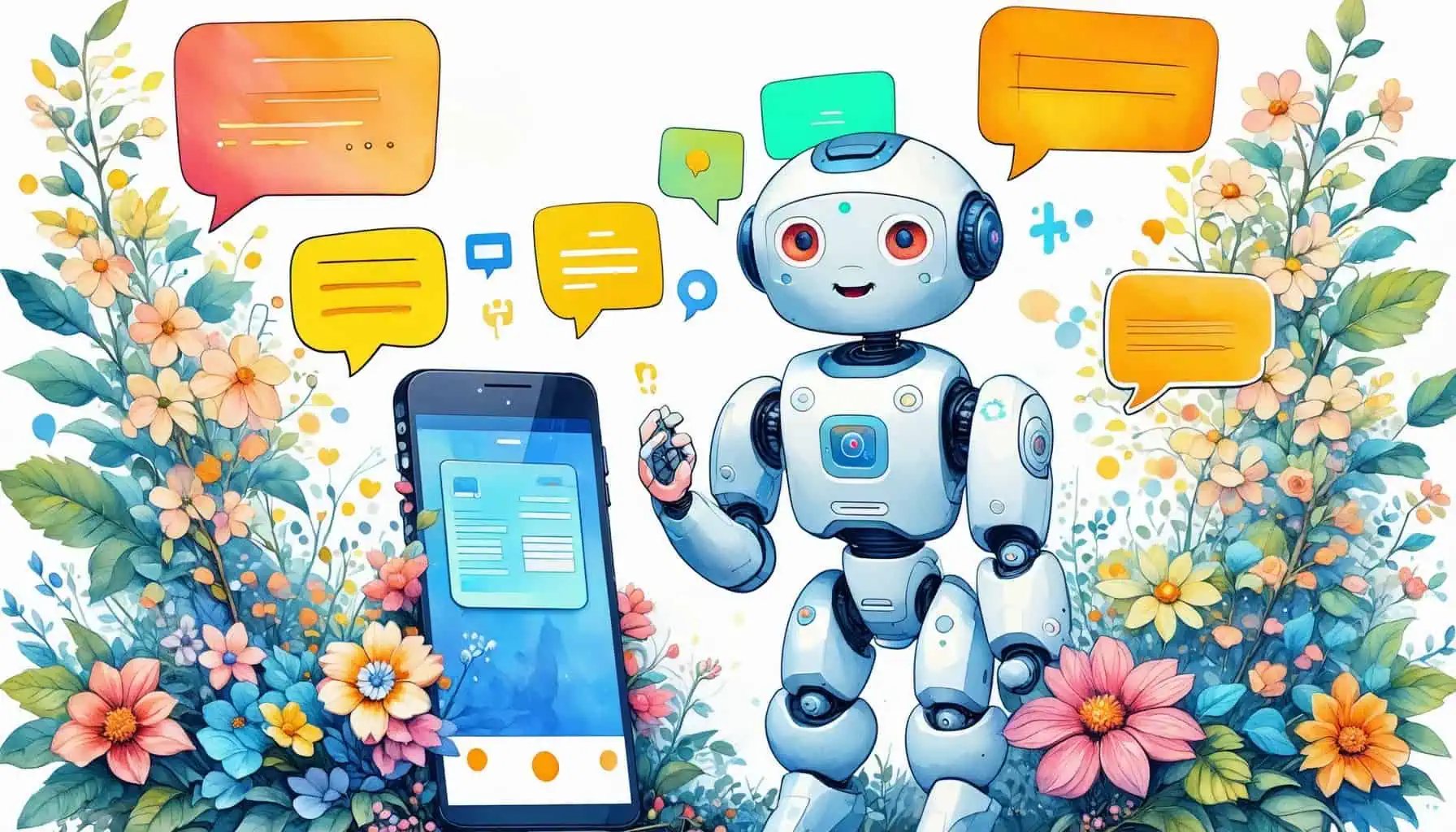Key Takeaways
- Effective onboarding experiences are essential for enhancing employee engagement and retention, significantly impacting long-term productivity.
- Implementing the 5 C’s of onboarding—Compliance, Clarification, Culture, Connection, and Check-back—can streamline the integration process for new hires.
- A well-structured onboarding program can reduce turnover rates by fostering a sense of belonging and alignment with company values.
- Utilizing technology, such as onboarding software and chatbots, can enhance the onboarding experience UX by providing instant support and resources.
- Companies like Google, Salesforce, and Netflix exemplify best practices in onboarding, showcasing innovative approaches that lead to higher employee satisfaction.
In today’s competitive job market, mastering onboarding experiences is crucial for organizations aiming to attract and retain top talent. An effective onboarding experience not only sets the tone for new hires but also significantly impacts their long-term engagement and productivity. In this article, we will delve into the meaning of onboarding experiences and explore the importance of effective onboarding experiences in fostering a positive workplace culture. We will examine the 5 C’s of onboarding and how they enhance the onboarding experiences UX, providing insights into the best practices that leading companies implement. Additionally, we will share employee onboarding experience examples from top organizations, highlighting unique onboarding experiences that stand out. Whether you’re looking to improve your own onboarding process or simply want to understand its significance, this article will equip you with essential tips and insights to create best onboarding experiences for new hires.
What is an onboarding experience?
Understanding the onboarding experience meaning
An onboarding experience refers to the process through which new employees or users are integrated into an organization or system. This experience is crucial for ensuring that individuals understand their roles, the company culture, and the tools they will be using. A well-designed onboarding experience can significantly enhance employee engagement, retention, and productivity.
Key components of an effective onboarding experience include:
- Pre-Onboarding Preparation: Before the official start date, provide new hires with essential information about the company, their role, and what to expect. This can include welcome emails, access to company resources, and introductions to team members.
- Structured Orientation Program: Implement a comprehensive orientation that covers company policies, procedures, and culture. This should also include training on specific tools and technologies relevant to their position.
- Mentorship and Support: Assign a mentor or buddy to new employees to guide them through their initial days. This personal touch can help ease the transition and foster a sense of belonging.
- Feedback Mechanisms: Regular check-ins and feedback sessions can help new hires voice their concerns and experiences, allowing for continuous improvement of the onboarding process.
- Utilization of Technology: Incorporating tools like Messenger Bots can streamline the onboarding experience by providing instant answers to common questions, scheduling meetings, and delivering training materials. This can enhance engagement and ensure that new hires feel supported from day one.
Research shows that organizations with effective onboarding processes can improve employee retention by up to 82% and productivity by over 70% (source: Glassdoor). By investing in a comprehensive onboarding experience, companies can foster a positive work environment that promotes long-term success.
The importance of effective onboarding experiences
Effective onboarding experiences are vital for both new hires and organizations. They set the tone for the employee’s journey within the company and can significantly impact overall satisfaction and performance. Here are some reasons why effective onboarding experiences matter:
- Enhanced Engagement: A structured onboarding experience helps new employees feel welcomed and valued, leading to higher levels of engagement from the start.
- Improved Retention Rates: Companies that prioritize onboarding can reduce turnover rates. Employees who undergo a comprehensive onboarding process are more likely to stay with the organization long-term.
- Increased Productivity: A well-organized onboarding experience equips new hires with the necessary tools and knowledge, enabling them to become productive members of the team more quickly.
- Stronger Company Culture: Onboarding is an opportunity to instill company values and culture in new employees, fostering a sense of belonging and alignment with organizational goals.
- Better Performance Outcomes: Organizations that invest in effective onboarding often see improved performance metrics, as employees are better prepared to meet their job expectations.
In conclusion, prioritizing effective onboarding experiences is essential for fostering a positive work environment and ensuring the long-term success of both employees and the organization.

What is an onboarding experience?
The onboarding experience is a critical phase in an employee’s journey within an organization. It encompasses the processes and activities that help new hires acclimate to their roles, understand company culture, and become productive members of the team. Effective onboarding experiences can significantly impact employee engagement, retention, and overall job satisfaction. By focusing on the onboarding experience meaning, organizations can create a structured approach that not only welcomes new employees but also sets them up for long-term success.
Understanding the onboarding experience meaning
At its core, the onboarding experience refers to the systematic process of integrating new employees into an organization. This includes everything from initial orientation sessions to ongoing training and support. A well-designed onboarding experience ensures that new hires feel welcomed, informed, and prepared to contribute to their teams. According to research from SHRM, organizations with effective onboarding programs can improve employee retention by up to 82%. This highlights the importance of investing in great onboarding experiences that cater to the needs of new hires.
The importance of effective onboarding experiences
Effective onboarding experiences are essential for several reasons. First, they help in reducing the time it takes for new employees to become productive. By providing clear expectations and resources, organizations can accelerate the learning curve. Additionally, a positive onboarding experience fosters a sense of belonging and loyalty among employees, which can lead to lower turnover rates. Companies like ADP and Mazda have implemented best onboarding experiences that emphasize engagement and support, resulting in higher employee satisfaction and performance.
Moreover, organizations that prioritize onboarding experiences can enhance their employer brand. When new hires share their positive experiences, it can attract top talent and improve the overall reputation of the company. For example, exploring best onboarding experiences can provide valuable insights into effective strategies that resonate with new employees.
The Importance of Effective Onboarding Experiences
The onboarding experience is a critical phase in the employee lifecycle, designed to integrate new hires into the organization effectively. A well-structured onboarding process not only familiarizes employees with their roles, colleagues, and managers but also immerses them in the company culture and policies. Here are key components that enhance the onboarding experience:
- Pre-Onboarding Preparation: Before the official start date, provide new hires with essential information, such as company values, team structure, and a welcome kit. This sets the tone and helps them feel valued from day one.
- Structured Orientation Program: Implement a comprehensive orientation that covers company history, mission, and vision. Include sessions on compliance, benefits, and workplace policies to ensure clarity and alignment.
- Role-Specific Training: Tailor training programs to the specific roles of new hires. Utilize a mix of e-learning modules, hands-on training, and mentorship to cater to different learning styles. According to a study by the Society for Human Resource Management (SHRM), effective training can increase employee retention by 25%.
- Integration with Team Members: Facilitate introductions and team-building activities to foster relationships among colleagues. This can include informal meet-and-greets or structured team lunches, which help build camaraderie and support networks.
- Continuous Feedback Mechanism: Establish regular check-ins and feedback sessions to address any concerns and gauge the new hire’s comfort level. This ongoing dialogue can significantly enhance engagement and performance.
- Utilization of Technology: Leverage onboarding software and tools to streamline processes. For instance, using chatbots can provide instant answers to common questions, enhancing the new hire’s experience and reducing the burden on HR teams.
- Evaluation and Improvement: Regularly assess the onboarding process through surveys and feedback from new hires. This data can inform adjustments and improvements, ensuring the onboarding experience evolves with organizational needs.
By focusing on these elements, organizations can create a more engaging and effective onboarding experience that not only prepares new hires for success but also contributes to higher employee satisfaction and retention rates. For further insights, refer to resources from the Society for Human Resource Management and Gallup, which emphasize the importance of a robust onboarding strategy in driving employee engagement and performance.
What are the 5 C’s of Onboarding?
The 5 C’s of onboarding are essential elements that contribute to a successful onboarding experience. They include:
- Compliance: Ensuring new hires understand company policies, procedures, and legal requirements.
- Clarification: Providing clarity on job roles, expectations, and performance metrics.
- Culture: Immersing new employees in the company culture, values, and mission.
- Connection: Fostering relationships with colleagues and managers to build a support network.
- Check-back: Regularly checking in with new hires to address concerns and provide feedback.
Implementing the 5 C’s can significantly enhance onboarding experiences UX, leading to better engagement and retention rates. For more insights on effective onboarding strategies, explore Best Onboarding Experiences.
Exploring the Best Onboarding Experiences for New Hires
When considering the best onboarding experiences for new hires, several companies stand out for their innovative approaches:
- Google: Known for its comprehensive onboarding program, Google emphasizes cultural immersion and role-specific training, ensuring new hires feel integrated from day one.
- Salesforce: Their onboarding experience includes mentorship programs and continuous feedback loops, fostering a supportive environment for new employees.
- Netflix: With a focus on freedom and responsibility, Netflix provides new hires with clear expectations and the autonomy to excel in their roles.
These organizations exemplify great onboarding experiences, showcasing how tailored approaches can lead to higher employee satisfaction and retention. For more examples, check out Transforming Employee Onboarding.
How Do You Describe Your Onboarding Experience?
Describing your onboarding experience effectively can set you apart in your career journey. It’s essential to articulate the unique aspects of your onboarding experiences that contributed to your professional development. Here are some key elements to consider:
Employee Onboarding Experience Examples from Top Companies
Many organizations have developed best onboarding experiences that not only welcome new hires but also integrate them into the company culture seamlessly. For instance, companies like Forbes highlight the importance of structured onboarding programs that include mentorship and peer support. These programs often feature:
- Interactive Training Sessions: Engaging new hires through hands-on activities that enhance learning.
- Clear Communication: Providing detailed information about company policies and expectations.
- Feedback Mechanisms: Implementing onboarding experience survey questions to gather insights from new employees.
Such practices not only improve retention rates but also foster a sense of belonging among new hires, making their transition smoother.
Unique Onboarding Experiences That Stand Out
Some organizations go above and beyond to create unique onboarding experiences. For example, the Mazda onboarding experience emphasizes cultural immersion, where new employees participate in team-building activities that reflect the company’s values. Similarly, the ADP onboarding experience focuses on personalized onboarding plans tailored to individual roles, ensuring that each new hire feels valued and understood.
These best employee onboarding experiences not only enhance the initial integration but also set the stage for long-term success within the organization.

What are 1-2 things you found most useful during your onboarding experience?
Effective onboarding experiences can significantly shape an employee’s perception of their new workplace. Here are some of the best employee onboarding experiences and their key takeaways that can enhance the onboarding journey:
- Pair New Hires with an Onboarding Buddy: Assigning a mentor or buddy to new hires can significantly enhance their onboarding experience. This relationship fosters a sense of belonging and provides new employees with a go-to person for questions and guidance. Research indicates that mentorship can improve job satisfaction and retention rates.
- Offer In-Person Training for New Remote Employees: For remote workers, in-person training sessions can bridge the gap between virtual and physical interactions. This approach not only facilitates hands-on learning but also strengthens team cohesion, leading to higher engagement and productivity.
- Send Company Swag: Providing branded merchandise can create a sense of pride and belonging among new hires. Items like mugs, t-shirts, or notebooks serve as tangible reminders of their new workplace, enhancing their emotional connection to the company.
- Invite New Hires to Lunch: Organizing informal lunches allows new employees to meet their colleagues in a relaxed setting, promoting relationship-building and easing the transition into the company culture.
- Ask for Feedback with an Onboarding Survey: Implementing an onboarding survey allows new hires to share their experiences and suggestions for improvement. This feedback loop is essential for refining the onboarding process and ensuring it meets the needs of future employees.
Common Onboarding Experience Survey Questions
To continuously improve onboarding experiences, companies should consider implementing onboarding experience survey questions. Here are some effective questions to include:
- How would you rate the clarity of the onboarding materials provided?
- Did you feel welcomed and included in the company culture?
- How helpful was your onboarding buddy or mentor?
- What aspects of the onboarding process did you find most beneficial?
- What improvements would you suggest for future onboarding experiences?
By gathering insights through these questions, organizations can enhance their onboarding experiences, ultimately leading to better retention and engagement among new hires. For more insights on transforming employee onboarding, check out Transforming Employee Onboarding.
What is another word for onboarding experience?
Another word for onboarding experience can vary depending on the context. For user onboarding, the term “user adoption” is frequently used to describe the process of helping users become familiar with a product or service. In the context of employee onboarding, common synonyms include “orientation” and “induction.” However, it is important to note that employee onboarding is a more comprehensive process that encompasses these terms and involves integrating new hires into the company culture, training, and providing the necessary resources for their success.
Exploring synonyms for onboarding experience
Understanding the various terms associated with onboarding experiences can help organizations tailor their strategies more effectively. For instance, “user adoption” emphasizes the importance of guiding users through the initial stages of product interaction, which is crucial for software companies. In contrast, “orientation” and “induction” focus on the initial steps of integrating new employees into a workplace. Each term highlights different aspects of the onboarding process, and recognizing these nuances can enhance the overall onboarding experience.
The role of customer onboarding experience in business success
Customer onboarding experience plays a pivotal role in business success, particularly in the SaaS industry. A well-structured customer onboarding process can lead to higher user retention and satisfaction rates. Companies like Forbes and Harvard Business Review emphasize that effective onboarding reduces churn and fosters long-term relationships with customers. By implementing personalized training programs, mentorship opportunities, and regular feedback sessions, businesses can significantly improve their customer onboarding experiences. Additionally, leveraging technology, such as onboarding software or chatbots, can streamline the process and provide real-time assistance to new users, making the experience more engaging and efficient.
Best Onboarding Experiences Examples
When evaluating onboarding experiences, it’s essential to highlight examples that set the standard for new hires. Companies like Forbes and Harvard Business Review have documented effective onboarding strategies that enhance employee engagement and retention. Here are some of the best onboarding experiences examples that stand out:
- Google: Known for its comprehensive onboarding process, Google emphasizes cultural integration and hands-on training, ensuring new hires feel welcomed and prepared.
- Salesforce: Their onboarding experience includes personalized training sessions and mentorship programs, which help new employees acclimate to the company culture and their roles.
- Netflix: Netflix focuses on transparency and autonomy, providing new hires with clear expectations and the freedom to innovate, which fosters a strong sense of ownership.
- Airbnb: The company’s onboarding process includes immersive experiences that connect new hires with the brand’s mission, enhancing their emotional investment in their work.
These great onboarding experiences not only facilitate a smoother transition for new employees but also contribute to higher retention rates and job satisfaction.
Best Onboarding Experiences UX in the Tech Industry
In the tech industry, the onboarding experiences UX is crucial for retaining talent and ensuring productivity from day one. Companies like ADP and Mazda have implemented innovative onboarding solutions that leverage technology to enhance the user experience:
- ADP: Their onboarding platform is user-friendly, allowing new hires to complete paperwork digitally and access training materials seamlessly, which reduces administrative burdens.
- Mazda: The Mazda onboarding experience includes interactive modules that engage new employees through gamification, making the learning process enjoyable and effective.
- Slack: Slack’s onboarding process is designed to familiarize new hires with the platform through guided tutorials, ensuring they can utilize all features effectively from the start.
- Zoom: Zoom offers a structured onboarding program that includes live training sessions and resources, helping new employees quickly adapt to the remote work environment.
These examples illustrate how a well-designed onboarding experience can significantly impact employee satisfaction and productivity, making it a vital component of any tech company’s strategy.




